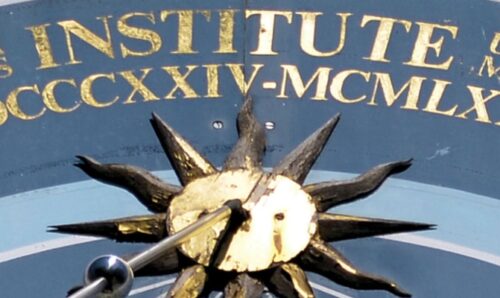New predator shows its teeth
Departments Dinosaurs Research impact and institutes 28 February 2018
Fuxianhuiid – it may not be simple to say but these ancient arthropods have always seemed like pretty simple animals in all other respects. However, things aren’t always what they seem and the discovery of a new type of fuxianhuiid has provided a valuable insight into how predators evolved.
A team of scientists including Dr David Legg from the School of Earth and Environmental Sciences examined the fossilised creature – which is named Alacaris mirabilis and is the first of its kind to be found – and discovered that it had limbs positioned under its head. Fascinatingly, these appendages featured gnathobases (that’s teeth to you and me), suggesting that the arthropod was a predator.
An explosion of life

To get a grip on the importance of this discovery, you have to travel back in time. Way back – 500 million years to be slightly more precise – to the Cambrian period. This was the time of the ‘Cambrian explosion’ when life forms began to rapidly evolve and the earliest ancestors of the animals alive today took shape (literally).
Alacaris mirabilis and its fuxianhuiid buddies are recognisable to us today only because they are among the first creatures to leave fossilised remains. However, the amount of information scientists can get from these fossils depends on multiple factors – like which way the animal was facing when it died.
Not only is this recently-discovered fossil (which was dug up in Xiaoshiba in South-West China) remarkably well preserved, but it is also positioned upside down. This meant scientists could see and examine its limbs and nervous system, which allowed them to make an interesting discovery.
A discovery with bite

Fuxianhuiid, like all known animals at the time, lived in the water. It was believed they scrabbled along the seabed, with the movement of their limbs stirring food up, which then floated into their mouths. Known as ‘mud grubbers’, they might occasionally eat smaller animals, but it was thought this was unintentional.
However, the new fossil clearly features gnathobases on the appendages by its head. These are common in arthropods and allow them to either carry or eat food – think of the mandibles on an insect.
These appendages suggest that Fuxianhuiid could have been active hunters or eaten carcasses much larger.
Dr Legg, who is a Dame Kathleen Ollerenshaw Research Fellow at the University, explains why the discovery of these gnathobases is so important. “It suggests a sophisticated mode of predatory feeding. Previously, Fuxianhuiid were considered mud-grubbers that may have accidently eaten the occasional tiny animal. However, these appendages suggest that, in reality, they could have been active hunters or eaten carcasses much larger.
“Fuxianhuiids pre-date the last common ancestor of all modern arthropods, so this novel ecological exploration may have been crucial for the origin and proliferation of this group, which is now the most abundant phylum [category] on Earth today,” Dr Legg continues.
As a result, the fossil represents one of the earliest examples we have of a sophisticated predator.
Arthopods are invertebrate animals that have a segmented body with an exoskeleton and paired jointed appendages. The phylum of Arthopoda that they fall under is the largest in the animal kingdom, so insights into how they evolved are extremely valuable and can provide an understanding of why the creatures are so successful today. Arthropods sharing the world with us now include butterflies, crabs, scorpions and spiders.
Extinction event

The Cambrian period kicked off the Paleozoic Era of Earth’s history, when life in the form of soft-shelled animals was emerging and there was an ‘explosion’ of diversity. However, this period also marked the planet’s largest ever mass extinction event – far greater than the extinction that killed off the dinosaurs. The event, which had a devastating impact on the life that resided at the time (including trilobites – another early group of arthropod), is thought to have been caused by the temperature of the planet cooling and the sea levels dropping.
We are currently living through what some call the ‘Sixth Extinction’ or ‘Holocene Extinction’. This is the ongoing loss of species of both animals and plants. And the cause? Well, we’re afraid to say it’s us.
The reason this era is regarded as a time of extinction is that the rate at which species are dying out is many, many times higher than that which is considered natural. This period started with the wiping out of large land animals like the mammoth (thought to have been hunted into extinction) and continues today because of humans eating meat, over fishing and polluting the oceans, in addition to the sheer volume of people on Earth encroaching on the habitats of other creatures.
So it seems we’re not actually that different to the asteroid that killed off the dinosaurs when it comes to the threat we present to life on Earth. Time will tell if humans are a greater match for arthropods than the rise and fall of oxygen levels, the climate change and the asteroid hits that have come before. Let’s hope not.
Words – Hayley Cox
Images – Helen M
Dr David Legg




